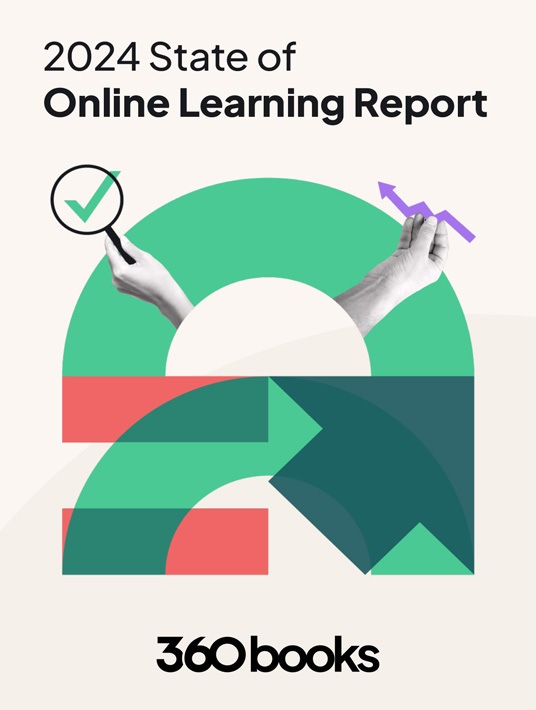What is the current state of online learning?
As one of the most important stakeholders in L&D, what do our employees actually think about online learning?
Our latest report, The State of Online Learning in 2024, finds that employees expect online learning to help them develop their skills and that it works for them.
In this article we discuss our findings with insights from Alice ThompsonDevelopment partner for Marks & Spencer, and Ross StevensonChief Learning Strategist and Founder of Steal These Thoughts. We discuss how peer learning is becoming the preferred choice for upskilling among employees and Subject-Matter Experts say they’re eager to partner with L&D.

eBook edition
2024 State Of Online Learning Report
What do we need to do to address the skills gap at scale and prove we've done it with our share of the massive global spend on L&D?
No surprise: Peer Learning is number one
When we asked respondents what would work best to meet their upskilling needs, they said learning from colleagues and peers was number one.
The findings highlight the importance and value that students place on peer-to-peer interactions and engaging with the learning experiences of their colleagues or line managers. These learning experiences can also influence the development of critical interpersonal skills in employees.
“People learn from others. I'm an introvert, but I still enjoy talking to other people and learning from them. I've learned best by watching, listening, reading, and then implementing.” – Ross Stevenson, Chief Learning Strategist and Founder of Steal These Thoughts
The power of peer learning is in identifying what people are doing in the organization that works for them, designing learning experiences around those things, and retaining those solutions that authentically work. It also helps people recognize and understand what success in your organization looks like through real examples.
Make life easier for your SME
The report also found positive feedback on the willingness of subject matter experts (SMEs) to contribute and their motivation to do so.
For example, recognition for their expertise was high in the results. L&D has a huge opportunity to leverage and reward this hunger for collaboration with our organization’s internal experts.
“There is so much knowledge and expertise under the roof of the organisation. We now have the technology to do it at scale, but we are not using it.” – Alice Thompson, Development Partner for Marks & Spencer
To ensure we get the most out of our collaboration with SMEs, learning and development needs to ask the right questions and have the right structure. We need to ensure they can contribute efficiently without wasting their time, enable them to create impactful content and encourage them to come back to the table next time.
Thanks to advances in AI, before we engage our SMEs, we can first make a good first attempt at formulating the specific objectives of the learning experiences needed, and then ask them to add nuances that fit the context of our organization.
Connecting the dots for effective training
Now is the time to make the connection between employee receptiveness to online learning and helping our organizations develop a more skilled workforce.
Our findings show that employees expect online learning to help them with their work and their upskilling needs. Addressing people’s top reasons for wanting to develop their skills is a great way to start meeting the needs of our learners.
“I think the research findings are so successful because L&D is more responsive to our people, what they want and what they care about,” Alice said.
The easy answer, as Ross explains, is to start with case studies. Find examples that clearly show what skills the employee has developed, how, and what the direct output is as a result. You also need to consider how your learning experiences align with what most employees really want and need.
Key findings from the 'State of Online Learning' report
Below are Ross and Alice's three key takeaways from the report to help you effectively close skills gaps and meet changing learner needs with your online learning initiatives:
- Make sure your digital learning content aligns with what people find important and want to learn.
- Identify future skills needs and make them available to people digitally.
- Stay on top of current trends and preferences and adapt your strategies to meet these changing demands for continued positive results.
Download the 2024 State Of Online Learning Report Get in touch today to gain valuable insights that will help you close gaps and launch more meaningful L&D initiatives.
Originally published on 360learning.com.
